The US tests its Global Fragility Act here, but Haiti resists.
The US tests its Global Fragility Act here, but Haiti resists.
By Fernando Esteche
With this interview we try to take a look at Haiti, the first independent black republic in the world, which is immersed in a deep political and social crisis. The Caribbean nation, recurrently hit by natural disasters and suffering from political storms caused by the colonization of its political class, faces political turbulence as one of its greatest challenges.
This interview dives into the current reality of Haiti, exploring the roots of the crisis, its current manifestations and the uncertain future prospects for this country that seems trapped in an endless cycle of suffering.
From Port-au-Prince, Kim Ives, commented on the issue to us. In addition to being a leader committed to the popular interests of the Haitian people, Ives is a prominent journalist and film director, who has presented in different international forums on the situation in Haiti, including in the United Nations Security Council, with a narrative, often alone, claiming the forms of organization of the people as legitimate, when international powers only see criminal gangs.
It is a unique and genuine approach that allows us to dodge the criminalizing maelstrom of the great Western and Atlanticist press so that, precisely where the problem is pointed out, Kim Ives identifies the solution; The so-called armed gangs are not responsible for the violence and chaos in Haiti, but rather present the possibility of overcoming such a situation.
How did Haiti come to have the landing of the Kenyan police, what are the real objectives of this maneuver?
Kenya is simply a proxy force serving Washington’s geopolitical interests in Haiti. The nation of 12 million is in the midst of a social revolution. Neighborhood committees of Haiti’s lumpen-proletariat – what the U.S. paints as merely criminal gangs – are now armed, and they are demanding “system change,” the transfer of ownership of Haiti’s means of production and state infrastructure and assets to the people.
The U.S. wants to crush this movement, and its end-goal is to establish the Global Fragility Act (GFA), a bipartisan program, enacted in 2019 under President Trump, for which Haiti is the “test case.” If successful in Haiti, it will be applied to Libya, Mozambique, Papua New Guinea, and other nations in Africa.
The GFA is a bilateral agreement under which a U.S. troops would be deployed to Haiti “to prevent political fragility” and the country would be put on a lifeline of U.S. “humanitarian aid” – basically, surplus U.S. agricultural production of corn, wheat, rice, vegetable oil, and other commodities provided by USAID. (This program is really a state subsidy of U.S. corporate agriculture or “Big Ag”).
Washington wants to prevent Haiti from falling into the orbit of China, by signing onto its “Belt and Road Initiative,” or, worse yet, of Cuba, Venezuela, Nicaragua, and other “pink” anti-imperialist nations.
The purpose of the Kenyans is counteracting the Viv Ansanm (Live Together) alliance of armed neighborhood committees, which was responsible for driving out former U.S. puppet Prime Minister Ariel Henry on Feb. 29, and create the climate for U.S.-supervised election that would bring to power a head of state that would sign a GFA agreement. Washington doesn’t want the 2024 take-over of Haiti to look like that of 1915, where U.S. Marines occupied the country and installed a puppet president, who then invited them in. The hypocrisy and theater of the invasion is too clear.
Pierre Espérance and Marie Yolène Gilles have been abundant propagandists of what they have defined as a dramatic situation of violation of human rights by focusing on what they call criminal gangs. In their demonstrations, widely disseminated by pro-American and pro-Caricom platforms, it seems that there are no more politics in Haiti than their denunciations and no other actors than the criminals.
The use of “human rights” as a central weapon in the arsenal of U.S. hegemony dates back to about 1977 when it was rolled out under the administration of President Jimmy Carter. It was improved in 1983 by President Ronald Reagan’s formation of the National Endowment for Democracy (NED), which lavishly supports the “soft power” of its human rights groups to brand, bully, threaten, and blackmail anybody or any group that doesn’t bow to or integrate into the U.S. agenda.
The NED openly does the political work that the CIA used to do covertly. Espérance’s RNDDH and Gilles’ FJKL are the two strong-men who control through their intimidation most of Haiti’s traditional political formations. RNDDH (National Human Rights Defense Network) in particular has been the principal architect of the smear campaign against Jimmy “Barbecue” Cherizier and the G9 anti-crime alliance he initiated, ironically branding him as a criminal.
The actions of disarming any vestige of the national state by the elite of Caricom or the United States are more than evident in a maneuver of national chaos; is this operation through the Kenyan intervention a breach of this policy of recomposition of the state, or is it the same thing?
The destabilization and debilitation of Haiti’s state is the tried-and-true Anglo-American tactic of “divide and conquer,” which was used to take over North America and much of the Third World. The Haitians must be made to appear incapable of self-rule and self- self-determination, so the Kenyan deployment is a continuation of the policy with this aim. As a by-product, the U.S. orchestrates Kenyans killing and repressing Haitians, thereby undermining solidarity between the two nations which face many of the same burdens (crushing debt, corrupt ruling elite, etc.) created and maintained by neocolonial domination.
There are people like Jimmy Cherizier who have been sanctioned directly and individually by international organizations, they treat them as criminals and strip them of their political power… are they simple bandits or is there popular resistance to chaos and occupation in these organizations?
Jimmy Cherizier is the architect of a project to bring development and stop crime in poor neighborhoods but has developed into a revolutionary movement to bring “system change.” He has been the most sanctioned, vilified, and targeted of any armed group leader in Haiti.
Since the G9’s founding in 2020, the U.S. and Haitian oligarchy sought to weaken or eliminate him by funding and arming criminal gangs, which were part of a rival alliance called the G-Pèp. After failed revolutionary bids in 2021 and 2022, Cherizier, in late 2023 and early 2024, managed to win over the G-Pèp armed groups into a larger alliance called the Viv Ansanm, which succeeded in ousting Ariel Henry in February 2024. Cherizier doesn’t have complete control in what is essentially a neighborhood alliance, but he does have the moral authority and increasingly the political respect of the other armed groups, and the force has become the principal obstacle to Washington’s neocolonial designs in Haiti. Hence, it is essentially an anti-occupation, anti-imperialist force, despite some Viv Ansanm member groups still engaging in criminal activities.
Does the Haitian popular movement have a strong political expression that can assume the tasks of national reconstruction?
No, due to the coups d’état of 1991 and 2004 and the subsequent foreign military occupations, much of Haiti’s popular movement leadership has been either decapitated or coapted. Nonetheless, the leadership of organs like Haiti Liberté issue from the democratic nationalist popular movements of the 1986 to 2011 period, sees the potential of Cherizier’s movement, and has sought to guide and accompany the movement, hopefully helping to form and recruit the cadre for national reconstruction.
What is the situation of the country since the Kenyan occupation?
The 400 Kenyan troops deployed so far have had very little effect on the situation. They mostly remain in their U.S.-built compound. It now seems that their salaries are not being paid. There is growing skepticism about their mission among the Haitian people.
Finally, is it possible for Haiti to find the path to sovereignty and independence started at the beginning of Our America?
Haiti was the first independent nation of Latin America, and Cherizier is very conscious of the historic role his movement is engaged in. Whether the movement will succeed is impossible to predict, but it has many factors working in its favor, principally: 1) the lack of any elected government whatsoever in Haiti; 2) the over-extension of U.S. and European imperialisms with the conflicts in Ukraine and Israel/Palestine; 3) the meteoric rise of a new multipolar world, heralded by the growing BRICS coalition; and 4) the ideological awakening of the Haitian people, after 40 years of coups and occupations, to the true and toxic nature of the U.S., Canadian, and French neocolonial “partners.”







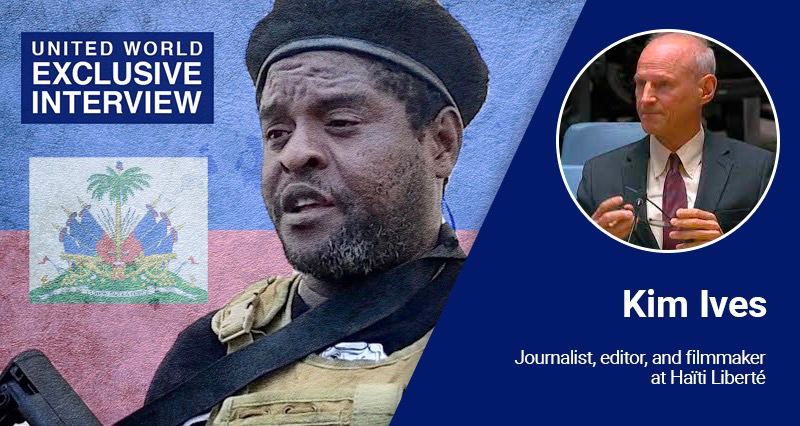
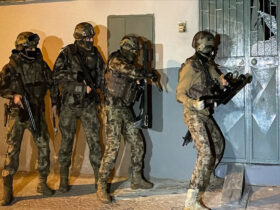

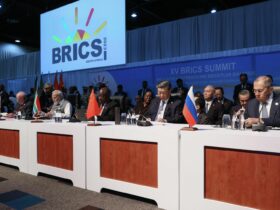
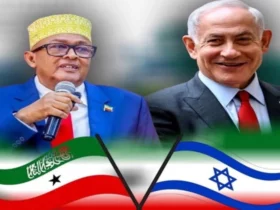
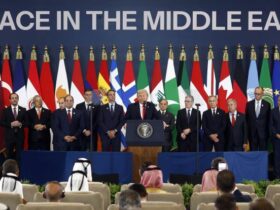

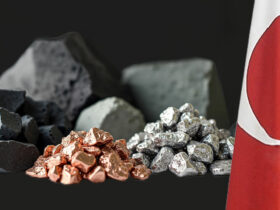
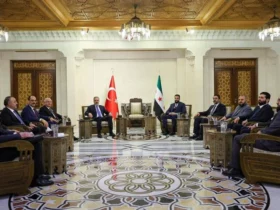

Leave a Reply